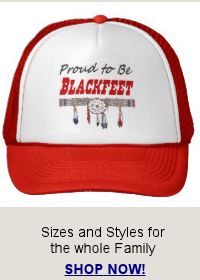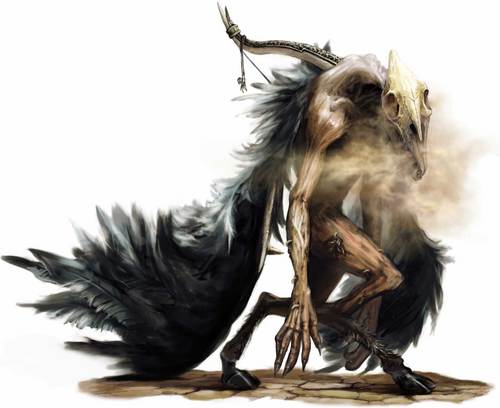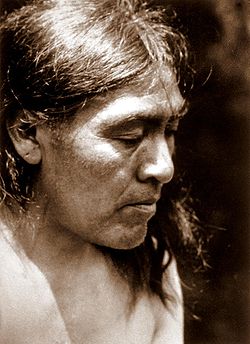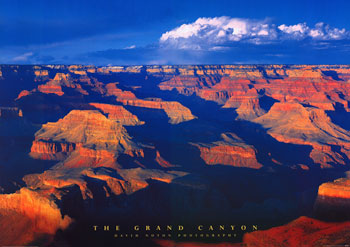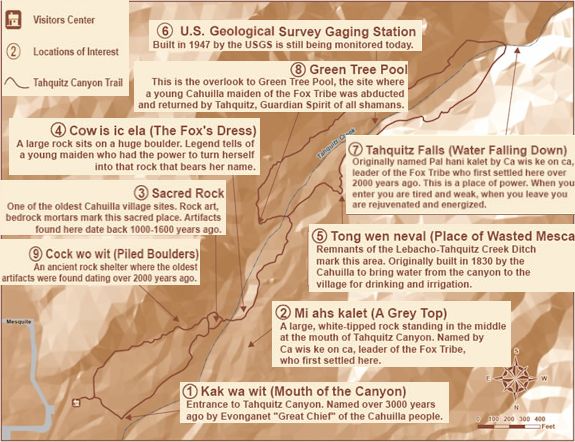Today there are 18 First Nations in Canada and 17 Tribes in the United States who are the descendants of the Ocheti Sakowin. The Ocheti Sakowin speak three main dialects, Dakota, Nakota, and Lakota, that in time have evolved into a number of sub dialects.
Tribes by Region
Ethnographers commonly classify the native peoples of the United States and Canada into ten geographical regions with shared cultural traits. The following list groups native american indians by their region of origin, followed by the current reservation locations.
Overview of the Creek Indian Tribe
23 ViewsThe Creek Indians were a confederation of tribes that belonged primarily to the Muskhogean linguistic group, which also included the Choctaws and Chickasaws. The Muskogees were the dominant tribe of the confederacy, but all members eventually came to be known collectively as Creek Indians.
At present, the Poarch Creek Indian Tribal Roll is open for membership only if the following conditions are met.
Finding your Cherokee ancestors
23 ViewsIn 1976, Cherokee voters ratified a new Cherokee Constitution, which changed the ways of measuring tribal membership. At that time, it was determined that anyone who could trace direct descent from the Dawes Rolls, a census taken between 1902-1907, could become a registered citizen of the Cherokee Nation. There are now over 165,00 registered Cherokee citizens. Here is how to determine if you might be eligible for enrollment in a Cherokee tribe.
The different Census Rolls are given control numbers by the National Archives so they may be ordered, such as M-1234. The rolls are usually named for the person taking the census. Each roll pertains to a particular year so it is important to select the year that applies to the individual whom you are looking to find. I usually like to start with the Guion Miller Roll. The claims had to be on file by August 31, 1907. In 1909 Miller stated that 45,847 separate applications had been filed representing a total of about 90,000 individuals; 3436 resided east, and 27,384 were residing West of the Mississippi.
The Cherokee Indians have had continuing dealings with the U.S. Government since the 1700’s through treaties, legislation, and the courts. There are probably more federal records concerning the Cherokees than any other tribe.
In doing research on Choctaw genealogy, it is useful to combine standard genealogical research with information from federal records. The typical research of records in the county courthouse or state archives frequently leads to other information from the federal records.
There are extensive governmental records relating to trade, military affairs, treaties, removal to Oklahoma, land claims, trust funds, allotments, military service and pensions, and other dealings with the Choctaw Indians, which reach back to the early days of the existence of the Republic.
The records relating to the Creek Indians are actually records of a number of different Indian tribes who belonged to confederacy of which the Muskoke or Creek (as they were called by the Europeans) were the principal power. The confederacy included various Muscogee people such as the Okfuskee, Otciapofa, Abikha, Okchai, Hilibi, Fus-hatchee, Tulsa, Coosa, as well as the Alabama, Natchez, Koasati and possibly some Shawnee who settled among them.
There are only three requirements for enrollment in the Fort Independence Indian Community of Paiute Indians of the Fort Independence Reservation. Section 1: The membership of the Fort Independence Community shall consist of:
Ely Shoshone Tribe of Nevada tribal enrollment requirements… To be eligible for enrollment in the Ely Shoshone Tribe of Nevada, you must submit in writing proof of the following requirements as outlined in the Ely Shoshone Tribe Constitution adopted on April 21, 1990 and amended in 1999.
Enrollment in the Blackfeet Tribe is governed by Ordinance 14. (This link is a PDF file. You will need the Adobe Acrobat Reader to print and view this file. If you do not have the Adobe Acrobat Reader, you can download it for free here.)
The most dreaded of all Cherokee witches is the Raven Mocker, who robs the dying of their life. A Raven Mocker can be of either sex, and there is no real way to know one. They usually look old and withered, because they have added so many lives to their own. During the night when someone is sick or dying, the Raven Mocker goes there to take the life. He flies through the air with his arms outstretched like wings.
Hopi kachinas or katsinas.. KEYWORDS: hopi kachina hopi katsina kachinas hopi ceremonial dolls hopi spirit dolls hopi religious dolls kachina dance Hopi kachinas (or katsinas as the Hopi people call them) are supernatural beings who live among the evergreens of the San Francisco Peaks south of the Hopi Mesas, and at the Spring of the […]
The Three Mesas of the Hopi Reservation.. KEYWORDS: Hopi travel guide hopi etiquette hopi ceremonies first mesa second mesa third mesa Hopi Reservation hopi visitor’s guide travel tips visiting native american reservations hopi villages oldest continuously inhabited village in North America The Hopi villages are divided into three areas called mesas. Here is a visitor’s […]
Nearly every day, some determined person with pale skin and blue eyes comes to Lela Ummerteskee from far away, ready to fulfill a dream and register as an American Indian.
Not everyone has a rock-solid pedigree. The tribal enrollment officer for the Cherokee Nation has been presented with everything from an X-ray of a head purporting to show Indian cheekbones to scraped-off patches of skin — all offered as proof that a distant ancestor was Native American.
MORTON, Minn. – Gripping a cane tightly, Ernest Wabasha slowly reached to touch a pair of heavy iron shackles hanging from his mantel – the same shackles his great-grandfather, the legendary Chief Wabasha, wore during a forced march across the southwestern Minnesota plains a century ago.
Mdewakanton Dakota ancestors
A portrait of Chief Wabasha hung nearby, surrounded by the strong faces of the Wabasha line before and after. The most recent are photos of Ernest and his son, Wabasha No. 6 and No. 7.
KEYWORDS: Chief Wabasha Lower Sioux Indian Community Minnesota Indians american indians Dakota Sioux Mdewakanton Dakota Bluestone Goodthunders Mdewakanton Dakota ancestors Indian Wars Jackpot Junction Indian Casino lower sioux casino Mankato hangings Cans’a yapi meaning of lower sioux traditional name Buffalo Horse Camp Minnesota Indian reservation lost tribal traditions Indian culture AUTHOR: Renee Ruble MORTON, Minn. […]
Ishi: The last Yahi Indian
23 ViewsAt the quiet center stood a man. He never said his real name — to say it aloud to strangers would be unthinkable for a California Native American from the Yahi tribe — so he became known as Ishi, his people’s word for man. He spent almost 40 years living in isolation in the Mount Lassen foothills, one of the last dozen Yahi who hid themselves to avoid the white men who nearly wiped out their tribe.
KEYWORDS: Hopi petroglyphs ancient Indian tribes Wind Mountain petroglyphs at Three Rivers Hopi tribes of New Mexico and Arizona ancient site of Casas Grandes in Mexico Joe Ben Sanders sacred Hopi lands archeology of New Mexico Jornada Mogollon Hopi Tularosa Basin Hopi oral traditions Bear Clan Coyote Clan Parrot Clan Kachina Clan clan clans three-rivers […]
PINE RIDGE, S.D. – There is only the light of a quarter-moon and a canopy of shooting stars when Lakota voices in Stronghold camp say, “They are coming.”
In the distance, fourteen Lakota horseback riders, some riding bareback, are approaching on the same route that survivors of the massacre of Wounded Knee followed 112 years ago.
Pueblo family forced to bury twice
23 ViewsThe family of a deaf Laguna Pueblo woman was forced to hold two burial ceremonies for her because of a state oversight.
Alicia Waseta, 21, was dragged to death last September as she was crossing a street near the New Mexico School for the Deaf in Santa Fe, from where she had recently graduated.
The ugly head of racism is still alive and well in Indian country. Thanks to racist policies in the early 20th century, a part of the Seminole Nation in Oklahoma, has found itself in the middle of a racial tug of war.
Jeff Smith, slave of Geronimo
23 ViewsJeff Smith, along with his brother Clint, was captured by Indians on Sunday, March 3, 1869 by ten Lipan and 15 Comanches. Jeff was sold to an apache named Geronimo (also called Jerome by the Mexicans), a Bedonkohe Apache. His Apache name was Goyathlay, which means One Who Yawns. This article has permanently moved to […]
In a just-released book on the Northern Cherokee Nation of the Old Louisiana Territory, a chapter recounts this American Indian tribe’s history in Kansas. For some people, that account may come as a surprise, as the Northern Cherokee typically aren’t associated with the Sunflower State. Records and family histories speak otherwise.
This article gives an overview of the St. Francis Abenaki of the Odanak Reserve.
Source: As told by GERONIMO, Public Domain Document My grandfather, Maco, had been our chief. I never saw him, but my father often told me of the great size, strength, and sagacity of this old warrior. The Apache’s principal wars had been with the Mexicans. They had some wars with other tribes of Indians also, […]
Source: As told by Geronimo, Public Domain Document Apache celebrations To celebrate each noted event a feast and dance would be given. Perhaps only our own people, perhaps neighboring tribes, would be invited. These festivities usually lasted for about four days. By day we feasted, by night under the direction of some chief we danced. […]
Subdivisions of the Apache Tribe
23 ViewsSource: As Told By Geronimo, Public Domain Document The Apache Indians are divided into six sub tribes.To one of these, the Be-don-ko-he, I belong. Our tribe inhabited that region of mountainouscountry which lies west from the east line ofArizona, and south from the head waters of theGila River. This article has permanently moved to our […]
Hualapai of the twenty first century
23 ViewsThe Hualapai Tribe of northwestern Arizona is among many of the forgotten tribes. Most likely if at any event among non-indians you will be asked if you are Navajo. Why? Well of course they have the largest reservation and are just everywhere, they are better known. It is sad to say that most of the […]
After a 30-year closure, the lovely canyon named after a banished Cahuilla shaman called Tahquitz has reopened on a limited basis to hikers in Palm Springs. Tribal rangers lead daily hikes through the storied canyon, which is two miles as the phainopepla flies southwest of downtown.
In the way of the Crow, storytellers have passed down the traditions and history of the people word by word, from one generation to the next, since the beginnings of the tribe.
Are You of Melungeon Heritage?
23 ViewsYou might be of Melungeon heritage if you meet some or all of the criteria set out in this article.
Remember the Dakota 38
23 ViewsPoverty, starvation, and general suffering led to unrest that in 1862 culminated in the U.S.-Dakota Conflict, which launched a series of Indian wars on the northern plains that did not end until the battle of Wounded Knee in 1890, and resulted in the mass hanging of the Dakota 38..
The Cherokee War of 1839
30 ViewsThe Cherokee War of 1839 was the culmination of friction between the Cherokee, Kickapoo, and Shawnee Indians and the white settlers in Northeast Texas. The Indians, who had obtained squatters’ rights to the land from Spanish authorities, were promised title to the land by the Consultation, and on February 23, 1836, a treaty made by […]
AUTHOR:Jim Snyder The (Farmington) Daily Times BLOOMFIELD, N.M. — He’s in the winter of his life. Time is the only thing that marches now for Navajo Code Talker David W. Tsosie, 78, of Bloomfield. The Navajo Nation and the Marine Corps bypassed the Purple Heart-awarded World War II veteran for a Congressional Silver Medal for […]
Be the first to submit an article about the Havasupai Tribe of the Havasupai Reservation.
Fort Sill Apache Tribe of Oklahoma
23 ViewsBe the first to submit an article about the Fort Sill Apache Tribe of Oklahoma.
Fort Mohave Indian Tribe of Arizona
23 ViewsBe the first to submit an article about the Fort Mohave Indian Tribe of Arizona.
Of all the injustices done to Native Americans, none equals the cruelty and betrayal culminating in the tragic “Trail of Tears” when the Cherokee Nation was forcefully driven out of the North Carolina mountains and marched 1,200 miles to Oklahoma.
Those Cherokee who survived the journey to Oklahoma are known as the Western Band, or better known today as the Cherokee Nation. Descendants of those who hid in the Great Smoky Mountains to avoid removal are known as the Eastern Band of Cherokee Indians.
Tribal enrollment requirements for the Seminole Nation in Oklahoma are changing.
In a July 2000 referendum election, tribal members voted to require a one-eighth quantum of Seminole blood as a part of enrollment requirements. Former open enrollment requirements did not specify blood quantum as a part of the process.
